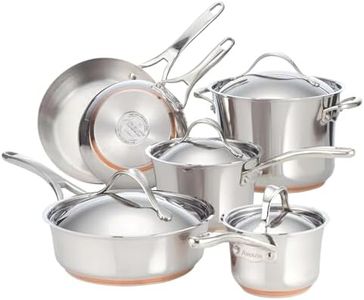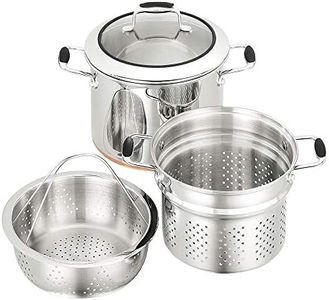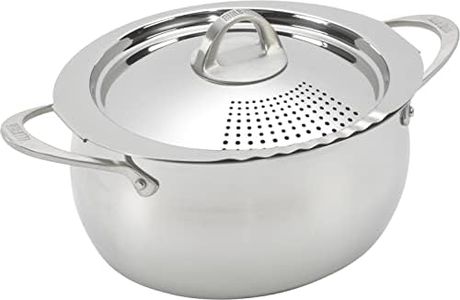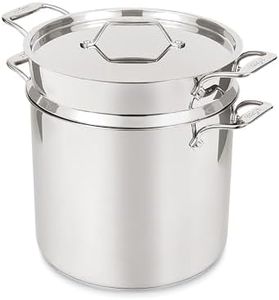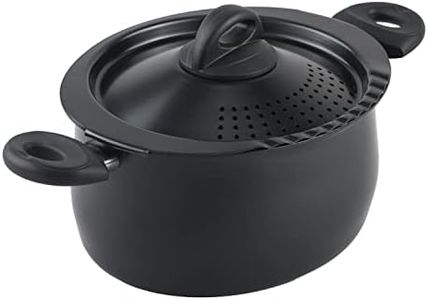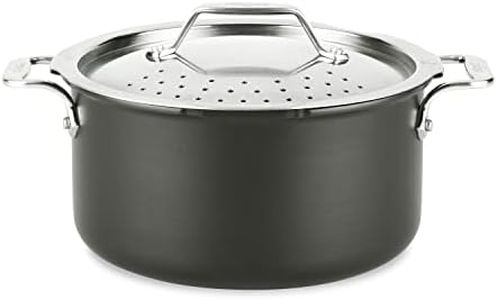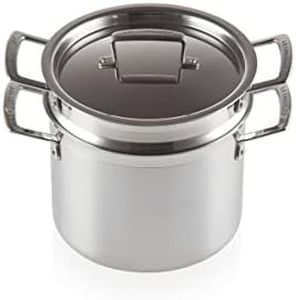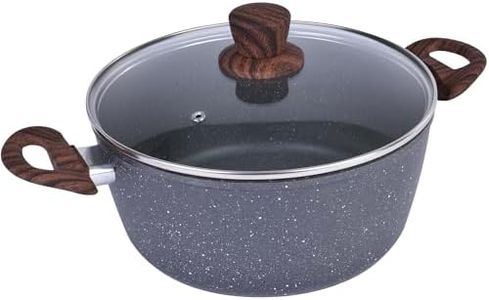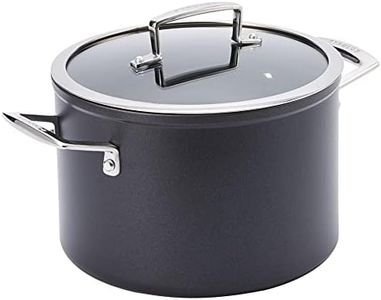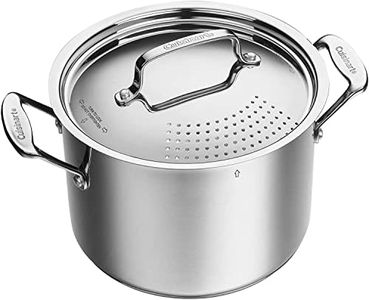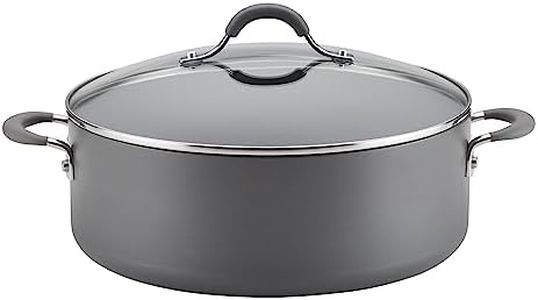We Use CookiesWe use cookies to enhance the security, performance,
functionality and for analytical and promotional activities. By continuing to browse this site you
are agreeing to our privacy policy
10 Best Pasta Pots
From leading brands and best sellers available on the web.By clicking on a link to a third party's website, log data is shared with that third party.
Buying Guide for the Best Pasta Pots
Choosing the right pasta pot can transform your pasta-cooking experience, making it easier, quicker, and more enjoyable. Not all pots are created equal, and selecting the right one depends on understanding your cooking habits, the types of pasta you make most often, and the available kitchen space. The goal is to find a pot that suits your household size, cleaning preferences, and desired cooking efficiency, ensuring perfect pasta every time.Size (Capacity)Capacity refers to how much water and pasta the pot can hold. This is important because cooking pasta in too small a pot can lead to sticking and uneven cooking, while a huge pot might be cumbersome and take longer to heat. Small pots (around 4-5 quarts) are suitable for one or two people, mid-sized (6-8 quarts) work well for families or regular entertaining, and extra-large pots (10+ quarts) are best for very large groups or making big batches. Think about how many servings you typically make so you don't go too big or too small.
MaterialThe material of your pasta pot affects how quickly it heats up, retains heat, and how easy it is to clean. Stainless steel is durable, non-reactive, and great for everyday use, but may take a little longer to heat. Aluminum heats quickly but may react with acidic sauces unless it’s coated. Nonstick surfaces make cleaning easy but may not last as long with heavy use. To decide, think about how important quick heating, long-lasting durability, and easy cleaning are to you.
Built-in Strainer or InsertSome pasta pots come with a strainer lid or a special insert to lift out pasta, which can make draining much safer and easier. A strainer lid lets you pour off water without another colander, but it demands a steady hand, while a pasta insert lets you lift out all your pasta at once. If you want simplicity and safety, a pot with these features is beneficial, but if you prefer to use your own colander or already have a draining system you like, a classic pot works fine.
HandlesHandles influence how easy and safe it is to carry and pour from your pot, especially when it’s full of boiling water. Look for handles that are securely riveted and stay cool, so you can move the pot without burning your hands or worrying about the handles breaking. Lightweight pots with comfortable handles are easier to handle for frequent pasta makers or those with less arm strength.
LidThe lid is important for bringing water to a boil faster and for safe, clean draining if it has a built-in strainer feature. Glass lids let you keep an eye on things without releasing heat, while solid metal lids are more sturdy but block your view. If you like to visually monitor your pasta or want quick boil times, look for a pot with a snug-fitting glass lid.
Compatibility with CooktopsNot all pots work on every type of stove. Induction cooktops require pots with magnetic bases, while gas and electric ranges are less picky. If you have or plan to get an induction stove, make sure your chosen pot is compatible. Always check what cooktop you have and match it with a compatible material.

